#artist is maurice de pompadour
Text
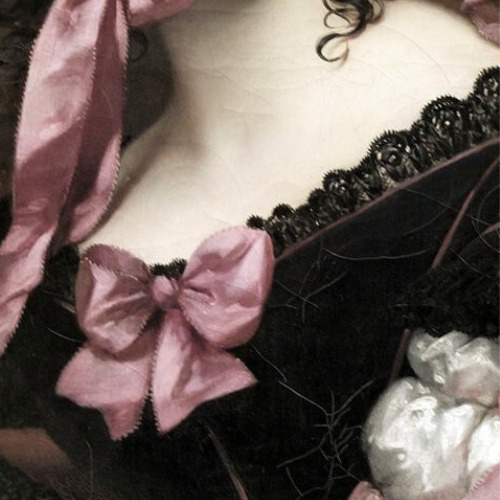
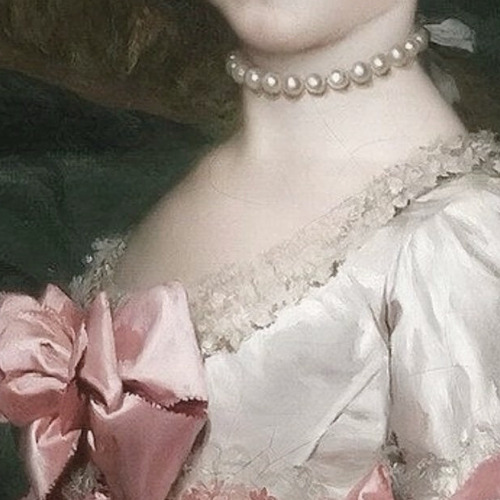


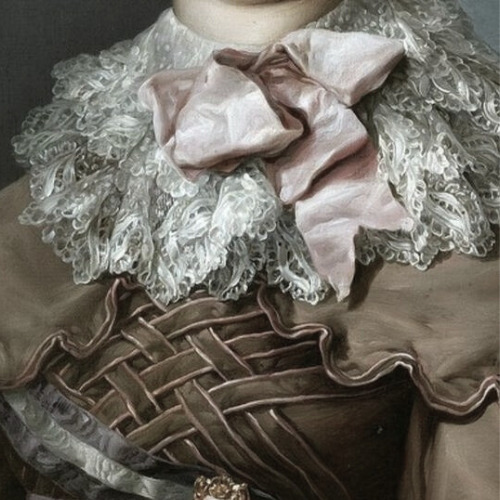
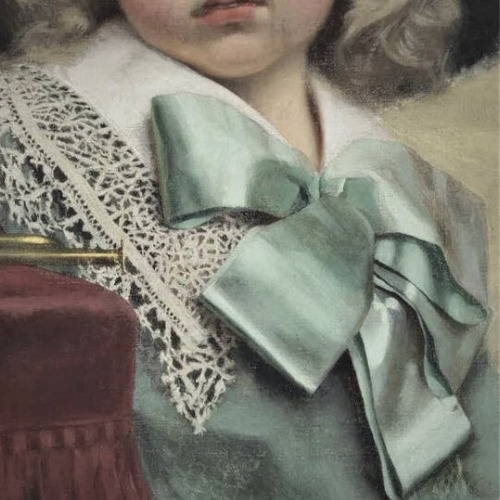
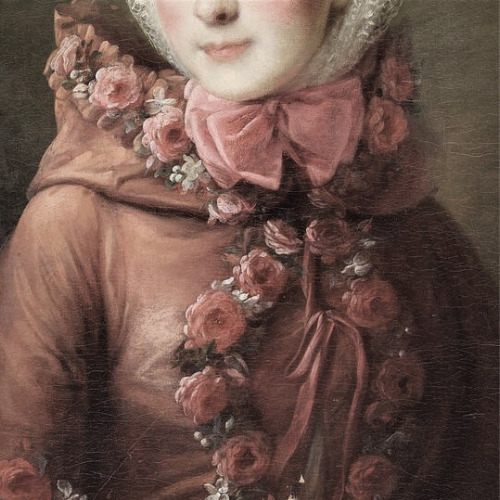
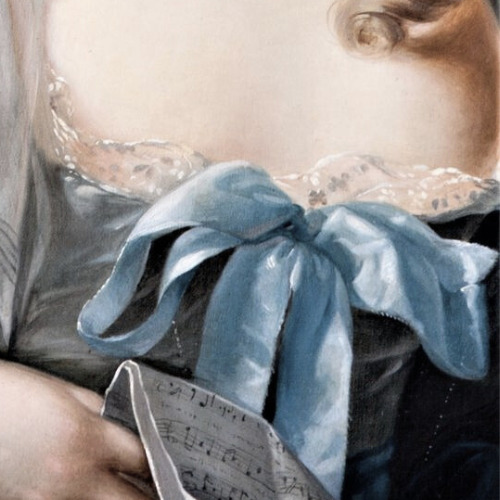
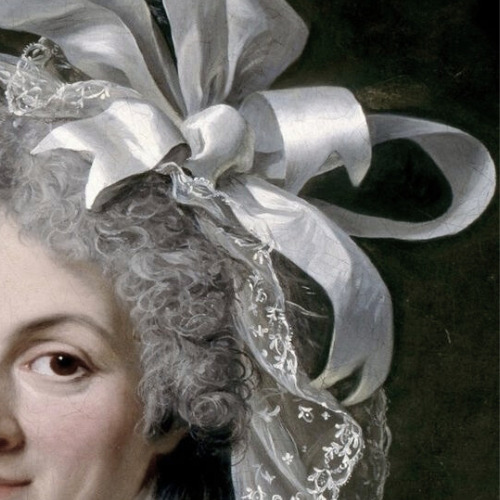


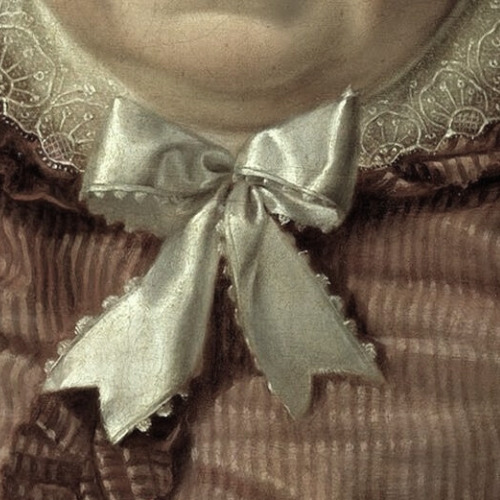
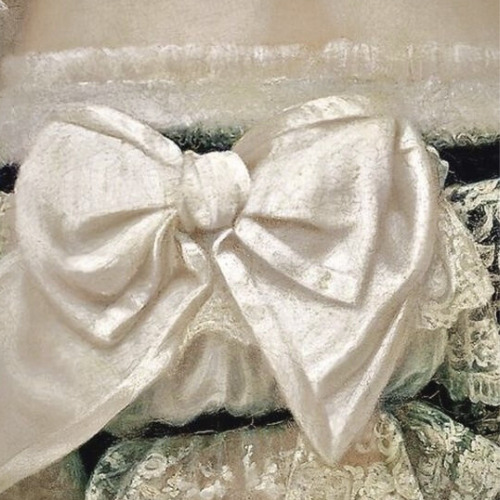
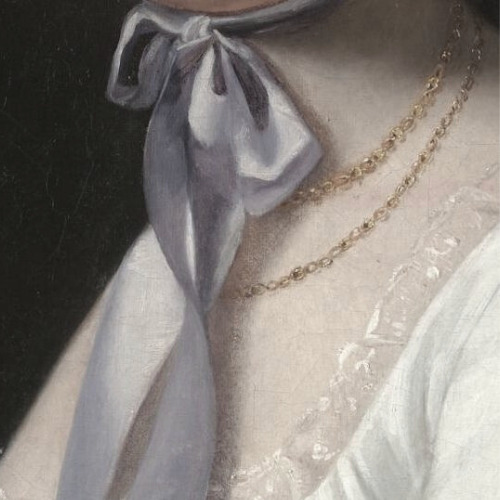
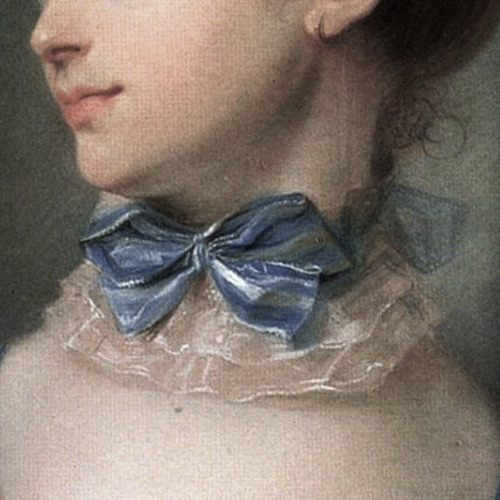
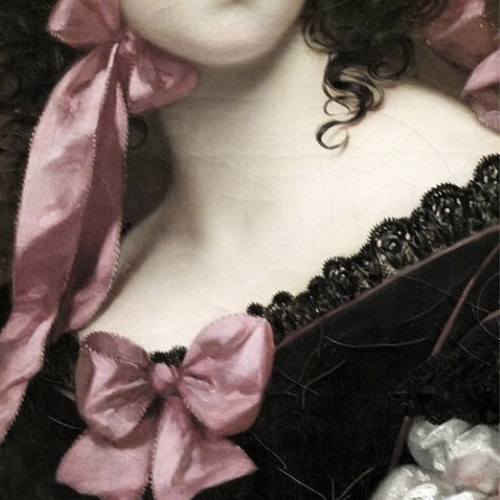
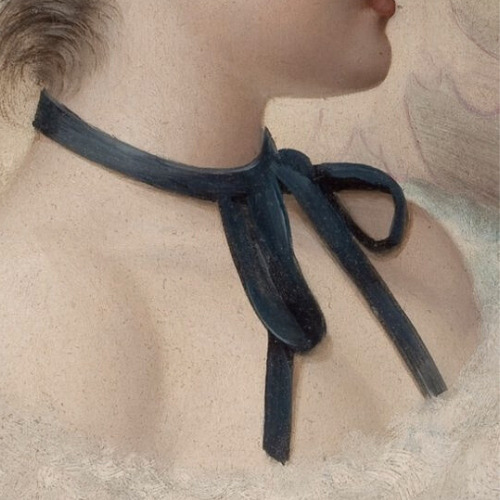
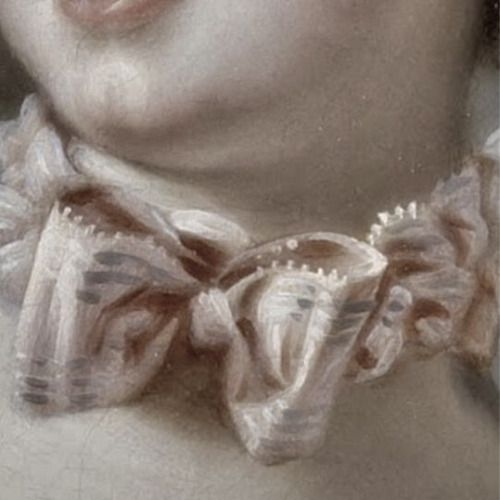
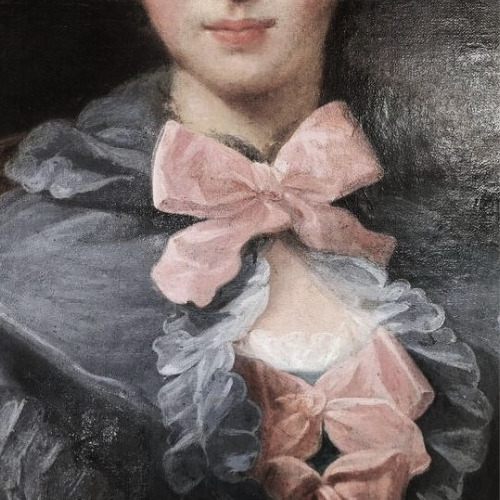
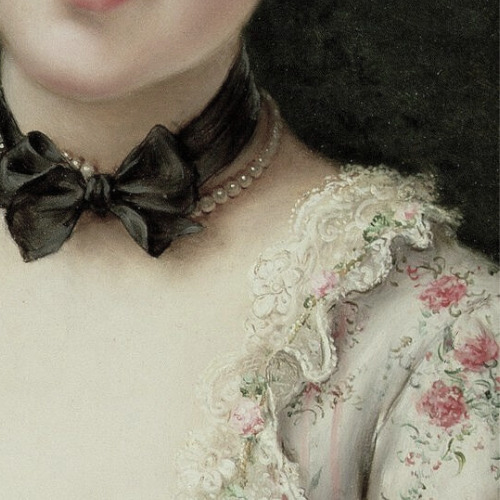
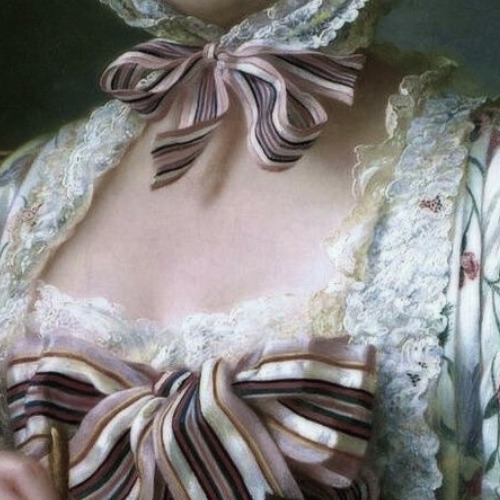
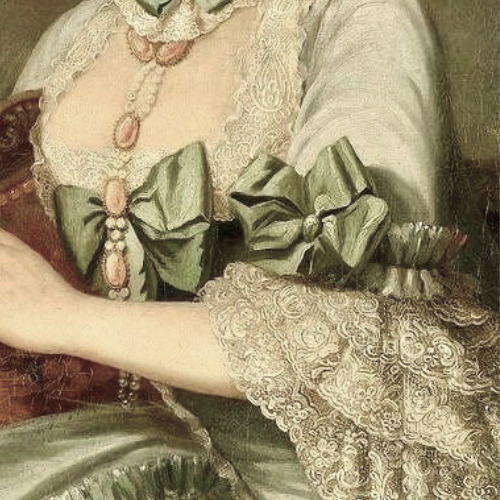
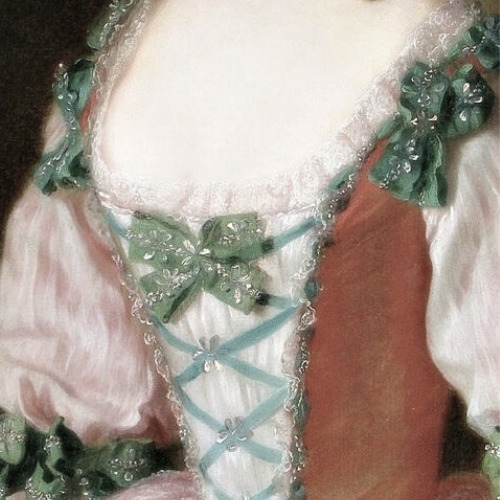
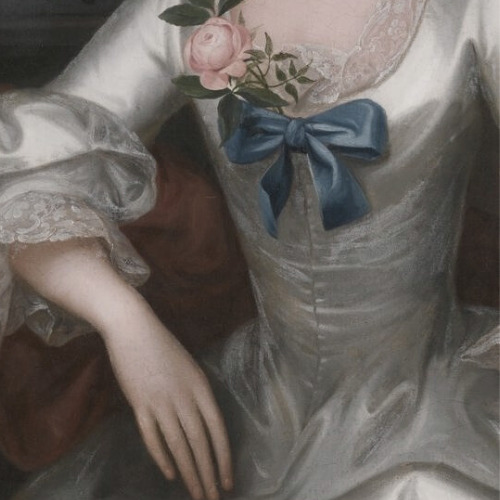
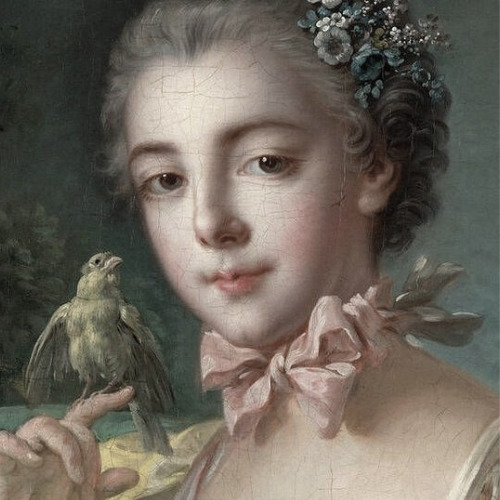
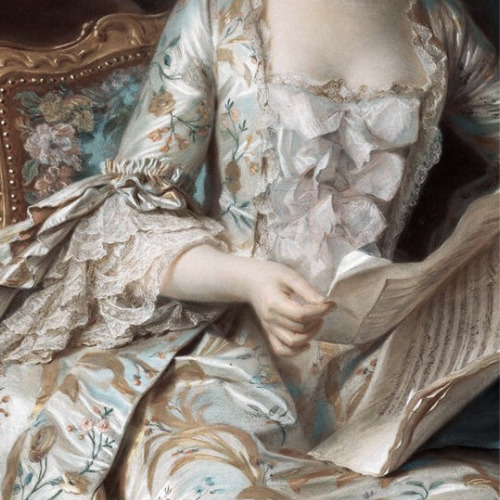
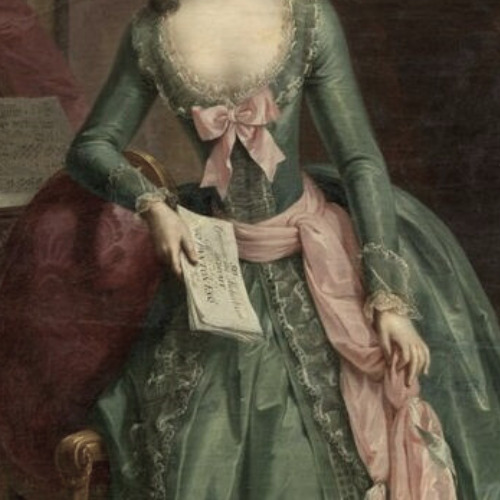
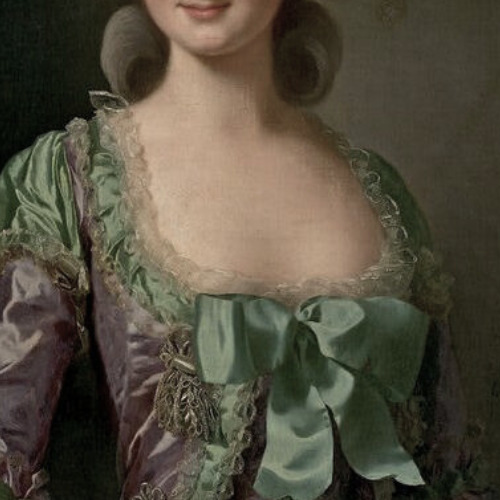


bows in art
#artist is joseph-desire court#artist is anton raphael mengs#artist is francois boucher#artist is elisabeth vigee le brun#cant find artist#artist is frederic soulacroix#artist is francis hubert drouais#artist is elisabeth vigee le brun-#artist is adelaide labille guiard#artist is lucius rossi#artist is jean honore fragnoard#artist is ferdinand georg waldmuller#artist is george raab#-cant find artist-#artist is jean-baptise perronneau#artist is joseph-desire court-#artist is vittorio matteo corcos#artist is francois boucher--#artist is francois boucher---#artist is francois martin kavel#artist is francois-hubert drouais#-cant find artist----#artist is charles amedee philippe van loo#i think artist is allan ramsay#artist is francois boucher------#artist is maurice de pompadour#artist is johann heinrich tischbein#artist is alexander roslin#artist is franz xavier winterhalter#artist is -alexander roslin-
272 notes
·
View notes
Text
Happy Little Accidents
“The Swing” or “The Happy Accidents of the Swing” is one of the most recognizable paintings in history. Created by Jean Honoré Fragonard in 1767 during the Rococo period, the colours and subject matter make this one of the most fun and recognizable paintings in art history. The painting was commissioned by Baron Louis-Guillaume Baillet de Saint-Julien who wanted a picture of his mistress that included him looking up the woman’s skirt. The subject is a young woman in a light pink gown being pushed on a swing in a garden while also lightheartedly tossing her heel. In the back, viewers can see a man pushing the swing, who is often interpreted as the mistress’s husband. There is also a dog hidden within the shrubbery on the bottom right and two different statues of putti on both sides of the woman. Fragonard uses colour and light to emphasize the subject of the painting which is the woman in pink on the swing. With the background being darker and in more green tones, the artist creates a colour and light contrast to let the swinging woman stand out. Additionally, the painting creates depth by blurring the trees in the background while sharpening the details in the foreground. The texture is present in the way Fragonard paints the trees to feel full and luscious as well as the frills on the dress. There is also a certain variety throughout this painting. Viewers can inspect different parts of the artwork and find different details that add to the beauty of this painting. For example, there is a man in the bottom left corner looking up, there are two statues of cupids, and the man hiding in the bottom right pushing the swing. Lastly, the mounted colours throughout the painting create unity within the painting making it a more cohesive work of art.
This painting has a more literal meaning to it since it is a portrait. This painting has a reputation for having a cheeky meaning and heavy symbolism behind its innocent façade. While it has the playfulness and light of the rococo period, the many symbols in this painting are not difficult to see. Whether or not viewers know about the illicit affair, it is clear that there is a feeling of love and desire in both their faces that conveys the meaning behind the painting. There is also the fact that when viewers track Saint-Julien’s gaze, it cannot be possible for him to be looking at his mistress’s face if her skirt is flying up from the swinging motion. The symbols help to better demonstrate the relationship between Saint-Julien and his mistress which gives it more intrigue and complexity. Furthermore, the different elements within the painting, such as the statues and the dog, bring even more attention to the woman in the painting while having their literal meaning.
There are many symbols hidden within this painting, which makes analyzing and interpreting it quite fun. For example,the Cupid statue on the far left side of the painting is modelled off the sculpture L’Amour Mençant from 1757 made by Étienne-Maurice Falconet for Madame Pompadour, a famous mistress of King Louis XV. The nod to this particular sculpture invokes the idea of illicit love, even amongst the noblest of French society. Additionally, the sculptures are what are known as putti, which are figures depicted as chubby man-children who are typically naked and sometimes winged. This can make them easily confused with cherubs, and initially symbolized passion and love. The same putto on the far left is seen holding his index to his lips in a silencing gesture. This gesture is a sign of secrecy which once more indicates the illicit nature of this relationship and invites viewers in on this secret. Second, there is the woman’s ankle being shown which would be considered shocking considering the conservative dress and customs of the period. Lastly, there is the dog, also known as man’s best friend, which can be found by the tree and the shrubbery. It sort of looks like a white little blob and can be seen barking at the woman. The dog is typically well-known for its loyalty. In this painting, the dog’s barking is seen as it alerts its master to the affair taking place. Lastly, the swing itself is a symbol, more specifically, the ropes. It is thought that ropes symbolize restraint and the confines of marriage. With her husband holding the swing’s ropes, viewers can see how he represents this control that he has over his wife. He is essentially holding back his wife. Furthermore, the swinging motion itself is interesting in its own right. When the woman swings, she goes back and forth between Saint-Julien and her husband, similar to what she is doing with her affair
The objective meaning of this painting is simply a woman in pink being pushed on a swing by a man, who could be seen as her husband, while her lover gazes up at her in the bushes. While there are many signs present, the woman in pink is the most obvious. She would be what Saussure calls the “signifier” which means the object of the sign. The “signified”, otherwise known as the meaning of the sign, would be a flirtatious invitation. Subjectively, I see the woman as similar to the objective view. The mistress is dressed in a light pink which is known to represent femininity and love. The swinging motion gives Saint-Julien an optimal view up her skirt, and the woman’s expression shows the viewer that she is aware of his intentions. Additionally, Saint-Julien is hiding in the bushes away from the other man’s sight, demonstrating a kind of secrecy unknown to others. Clive Hart and Kay Stevensoncall, scholars and authors of Heaven and the Flesh: imagery of Desire from the Renaissance to the Rococo (1995), the painting holds a deeper, more erotic meaning than simple voyeurism. The scholars suggest that there is a “[…] thinly disguised representation of inverted sexual intercourse. Saint-Julien lies alert but at ease while his mistress moves rhythmically back and forth above him. That she, by contrast, is a very active partner is indicated not only by her lively attitude on the swing but also by the flying slipper which she has tossed from her foot to suggest a moment of hasty undressing,” (Hart, Stevensoncall 49). This suggests that the subject itself, with its positioning and composition, is suggesting sexual intercourse. Interestingly enough, there is more evidence to indicate an erotic interpretation. Hart and Stevensoncall suggest that the man’s splayed hand mirrors the woman’s hand which suggests “[…] the surprise and imminent capitulation of a man overcome by a woman who takes initiative,” (Hart, Stevensoncall 49). The man pushing the swing, assumed to be her husband, appears to have this rather unknowing expression on his face, letting viewers assume that he is unaware of the affair taking place. It adds intrigue and a sort of narrative to this painting which adds to the artwork's fame.
It is clear that Fragonard had fun during this painting’s creation, and that enthusiasm comes across when viewing it. The duality between the playfulness of the rococo period and the erotic undertones creates an interesting dynamic. In my opinion, the portrait does an effective job of communicating the message behind the painting thanks to the heavy symbolism. Not to mention the little amount of logic it takes for viewers to track Saint-Julien’s gaze and notice the “true” object of his admiration. The choice of including the dog and the putti are excellent, strategic choices that add depth to the message behind the painting. While the artwork does a good job of conveying its message and ideas, it also leaves some room for subjective viewing and a little mystery. This painting by Fragonard has a strong visual appeal and a meaning that even today’s audiences have. It is truly one of my favourite paintings from history, and the symbolism is just the cherry on top.
Works cited:
Artincontext, Artincontext. “‘The Swing’ by Jean-Honoré Fragonard - the ‘L'escarpolette’ Painting.” Artincontext.org, 17 Oct. 2022,
https://artincontext.org/the-swing-by-jean-honore-fragonard/.
Cohen, Alina. “Why Fragonard's ‘The Swing’ Is a Masterpiece of Rococo Art.” Artsy, 9 Sept. 2019, https://www.artsy.net/article/artsy-editorial-undressing-erotic-symbolism-the-swing-fragonards-decadent-masterpiece.
“The Happy Accidents of the Swing by Jean-Honoré Fragonard.” Joy of Museums Virtual Tours, 7 June 2020, https://joyofmuseums.com/museums/united-kingdom-museums/london-museums/wallace-collection/the-happy-accidents-of-the-swing-by-jean-honore-fragonard/.
Hart, Clive, and Kay Gilliland Stevenson. Heaven and the Flesh: Imagery of Desire from the Renaissance to the Rococo. Cambridge University Press, 1995.
0 notes
Photo

La chemise à la Reine || Musée du Louvre
Once again, we return to my favorite piece of historical fashion, the chemise à la Reine. (Please return to the post “Versailles and Marie Antoinette’s Return to Nature” before continuing.) As a rectangular piece of thin muslin, layered and cinched around the waist and simple undergarments with a ribbon, it is easy to sew and easier to wear in comparison to the robes à la française and grand panniers that dominated French courtier fashion.
The bottom center features Madame de Pompadour’s famous Rococo portrait, a testament to fashion in the decades leading up to Marie Antoinette’s arrival in Versailles. The stiffness of the silks and stays she wears is evident in her posture.
In Vigée le Brun’s self portrait, bottom left, we see an early model of the chemise, worn with a simple overskirt and jacket to provide modesty and structure. As an artist and a mother, the chemise provided ease, comfort, and affordability to women that was unheard of by the time, even among many women outside of the court
Jacques-Louis David’s 1792 painting, bottom right, exhibits the simplicity of the chemise à la Reine after it had become popular and uniform among high-ranking women during the tumult of the French Revolution. Women wearing it appeared to denounce expensive, extravagant styles and could stay hidden from revolutionaries. Marie Antoinette would wear a similar chemise with a simple cap to her execution in 1793.
Francois-André Vincent’s 1793 portrait of the Baroness de Chalvet-Souville exhibits the beauty of the chemise. Without sacrificing comfort, details such as silk ribbons, layers of thin petticoats, and swiss dots could create a simple, yet sumptuous, look on any woman.
In 1795, after a decade of fashion and revolution developing the dress, Madame Sériziat wears the ultimate form of the chemise à la Reine: white, simple, elegant, and accompanied by a bouquet of flowers and blue silk ribbon. Unlike portraits of her Rococo predecessors, like Madame de Pompadour, Madame Sériziat truly appears content and relaxed, and her pose is not uncomfortable.
The top left portrait shows the gualle of the Regency fashions, a direct descendent of the chemise. Although full corsetry was adopted again, these dresses cinched beneath the bust and became as light as gossamer, earning it the nickname the Influenza Gown when women did not dress warmly enough in cold weather.
Paintings (l-r):
- Ingres, A. Dominique. Portrait de Mme. Rivière. 1805. Musée du Louvre.
- Davis, Louis. Madame Pierre Sériziat, née Émilie Pécoul. 1795. Musée du Louvre.
- Vincent, Francois-André. Portrait de la baronne de Chalvet-Souville, née Marie Broutin. 1793. Musée du Louvre.
- David, Jacques-Louis. Portrait de Madame Charles-Louis Trudaine, née Marie-Louise Micault de Courbeton. 1792. Musée du Louvre.
- Delatour, Maurice-Quentin. Portrait of the Marquise de Pompadour. 1748. Musée du Louvre.
- Vigée le Brun, Élisabeth. Self Portrait with her Daughter, Jeanne Julie Louise. 1786. Musée du Louvre
7 notes
·
View notes
Text
”Prințul pasteliștilor”, așa a rămas în istoria artei pictorul francez Maurice Quentin de La Tour (5 septembrie 1704, Saint-Quentin – 17 februarie 1788, Saint-Quentin), răsfățatul aristocrației și al mediilor academice de la mijlocul veacului al XVIII-lea. Un artist care ilustrează cât se poate de elocvent stilul rococo, chiar dacă s-a dedicat unui singur gen, cel al portretului și tehnicii pastelului. O figură zâmbitoare, poate ușor ironică, cu ochi expresivi și privire virilă, cu sprâncene stufoase și perucă bine strânsă pe ceafă, cu fundă albastră, un bărbat puternic îmbrăcat cu o redingotă în tonuri de bleu închis, cu nelipsitul jabou de dantelă, desprins din moda vremii – așa ne apare în autoportretul din perioada maturității (în jurul anului 1751), când era de mult celebru. Crescuse într-un mediu cultivat, era fiul unui muzician. Numele său de familie era Delatour, deformat, nu se știe grație cărui capriciu, în de La Tour (tour = turn). (A nu se confunda cu Georges de La Tour, pictor din veacul anterior, 1593 – 1652; nici cu Henri Fantin-Latour, 1836 – 1904.)
Voltaire, 1735
La 15 ani, în 1719 ajungea la Paris, ucenic într-o mică academie de pictură. Spre sfârșitul deceniului al treilea, îl întâlnește pe Jean Restout cel Tânăr, pictor rococo agreat de Academie, sub influența căruia se va perfecționa. Quentin de La Tour devine unul dintre cei mai apreciați pictori din atelierul deschis de Jean Restout la Paris, în 1730. Cinci ani mai târziu pictează în tehnica pastelului portretul lui Voltaire, tablou care îi aduce notorietatea. De la Tour devine repede un pictor la modă, arta sa portretistică aducându-i deopotrivă superlativele criticii și ale publicului. În 1737, o impresionantă galerie de autor, 150 de portrete expuse la Paris, sintetizează arta singulară a pictorului pastelist. La salonul din 1748 expune un pastel, la rândul lui celebru, Portretul lui Ludovic al XV-lea, bust. Quentin de La Tour este un desenator excepțional și un colorist de mare rafinament, exploatând toate resursele tehnicii în discuție. Încadrarea chipului uman urmează, e adevărat, rigorile clasice, artistul neabătându-se de la compoziția să-i spunem conformistă; ceea ce îl individualizează este însă finețea în stabilirea raporturilor dintre culoare și umbră, răsfrânte pe chipul uman și pe „decorul” care îl înconjoară. Iar tehnica pastelului se dovedește ideală pentru acest studiu meticulos, pentru această elaborare de extremă finețe, pentru trecerile subtile de la un ton la altul, pentru această lumină dulce și pentru umbra colorată, parcă având și ea tresăriri mătăsoase, seducătoare.
Se cuvine să fac o paranteză și să amintesc câteva date tehnice. Pastelul (”creion moale”) este o tehnică picturală ce ”utilizează pigmentul aproape pur și care, ca și acuarela, folosește drept suport hârtia mai groasă sau mai subțire, dar aspră”. Se distinge de acuarelă prin specificul culorii. În compoziția creioanelor moi sau a batoanelor intră pigmentul, un aglutinant și apa. Pot fi folosite și alte suporturi, ca pânza lipită cu clei de caseină pe un suport rigid. Tabloul în pastel se pune obligatoriu sub sticlă. Tehnica aceasta începuse să se răspândească la începutul secolului al XVIII-lea, odată cu producerea pe scară industrială a sticlei plate, subțiri.
Marchiza de Pompadour
Perfecționarea tehnicii pastelului (și implicit garanția conservării picturii în această tehnică) îi permit lui Quentin de La Tour degradeurile cromatice atât de fine, tonurile care reflectă lumina, trecerile de efect de la o nuanță la alta, reliefarea atmosferei vaporoase, a transparențelor parcă muzicale, tipice pentru stilul rococo. Observați cu cât rafinament și bun gust pictează Quentin de La Tour portretul Marchizei de Pompadour în tonuri de roz, care ”răsar” de pretutindeni, din chipul personajului, din rochia largă care umple tabloul, din obiecte – dar și acordul cromatic subtil cu nuanțele de verde și griurile colorate, acord pe care un pictor mediocru l-ar fi ratat, fără îndoială. Sau tonurile de roz, în mod evident diferite, cu alte reflexe, mai reci, în acord cu nuanțele de bleu strălucitor și de argintiu, din portretul Domnișoarei Sallé.
Doi ochi negri surâd galeș în portretul Mariei Fel (1757), în care ne întâmpină neașteptate tonuri de griuri albastre prin care De La Tour tălmăcește umbrele fine ce dau relief chipului. Și, deși ansamblul cromatic al portretului este rece, el respiră o surprinzătoare căldură interioară. O privire vie și prietenoasă răzbate din portretul lui Jean-Jacques Rousseau, pictat în tonuri dominante de ocru și argintiu. Un verde metalic explodează în portretul lui Marc-René, marquiz de Voyer d’Argenson, ocrurile şi roşul-brun domină tabloul dedicat lui D’Alembert.
În 1773, o cădere nervoasă îl determină pe ilustrul portretist al veacului să se retragă, în plină glorie, în orașul natal, Saint-Quentin, unde moare, cu mintea rătăcită, în februarie 1788.
Favorită a unor colecționari celebri (Wildenstein, Gulbelkian, Getty), arta lui Maurice Quentin de La Tour și-a etalat frumusețea, unitatea stilistică și originalitatea la marea expoziție organizată la Versailles, în 2004, cu ocazia tricentenarului nașterii pictorului.
Maurice Quentin de La Tour, ”prințul pasteliștilor” – articol de Costin Tuchilă ”Prințul pasteliștilor”, așa a rămas în istoria artei pictorul francez Maurice Quentin de La Tour…
0 notes
Link
In northern central France, Dreux is just over an hour west of Paris on the border with Normandy.
Although it’s a smallish town there’s a lot to see, like the burial chapel of the noble House of Orléans and an ornately sculpted belfry dating to the 1500s. Dreux has a peculiar mix of museums too, dealing with everything from painting to medieval wine and even the art of making combs. If you widen your radius to include Chartres and its stupendous World Heritage cathedral you’ll never be stuck for things to do. Let's explore the best things to do in Dreux.
[toc]
1. Chapelle Royale de Dreux
This chapel dates to 1816 and is the mausoleum for the House of Orléans.
It was built after the Revolution by the widow of Louis Philippe II, the Duke of Orléans who had been guillotined and was the father of the future King Louis-Philippe I. During the Reign of Terror the family crypt at Dreux’s Collégiale Saint-Étienne church had been desecrated and the bodies buried in a mass grave.
They were eventually dug up and moved to this glorious chapel, where 75 members of the House of Orleans, including Louis Philippe I, were buried. It’s a suitably regal monument, with a ring of expertly crafted recumbent tombs and stained glass windows hand-painted at the illustrious Sèvres Manufactory.
2. Belfry
At the old town hall, Dreux’s Belfry is the only building of its type in Eure-et-Loir and dates to the first decades of the 16th century. One of the men working on it was Clément Métezeau, the royal architect Louis XIII, who was very active in Dreux and also helped design the wall in La Rochelle.
What’s neat about the belfry is that it was built when the Gothic gave way to the Renaissance style: You can see a clear contrast between the sober lower floors and the upper stories, which are very ornate with delicate filigrees and mullioned windows. You can enquire at the tourist office about a guided tour.
3. A Walk around Town
Most of the center of Dreux is pedestrianized, and you can pass a carefree couple of hours milling around. On Rue Illiers, a quaint alley off Grand Rue Maurice Violette, there’s a pair of corbelled timber-framed houses, joined together by beams spanning the way.
Some buildings were opened to the public but were as valuable as a photograph, such as Hôtel-Dieu, a hospital from the 1600s and Pavilion Louis XIII from the same period. And when you see the Royal Chapel, be sure to stroll the gardens around it, which used to be part of the lost Château de Dreux, the House of Orléans’ ancestral home.
4. Musée d’Art et d’Histoire
This compact but compelling museum is in a lively 19th-century chapel and has items uncovering the region’s history, and a superb collection of art. The main event here has to be Monet’s Wisteria Study, painted in his garden at Giverny.
He is accompanied by a decent line-up of 19th and 20th-century artists like Montézin, Vlaminck and Le Sidner. The archaeological galleries have decorative pieces and architectural fragments from churches, monasteries, and châteaux.
There’s furniture from the Château De Crécy, owned by the Marquise de Pompadour, Romanesque carved capitals, a pair of Merovingian earrings and much more besides.
5. Église Saint-Pierre de Dreux
Begun in the 13th-century, this is one of those composite churches that has been adapted and extended many times. Work didn’t stop until the 1600s when the transept was completed, but the whole somehow remains uniform and harmonious. Once again Clément Métezeau joined in 1524 when he decorated the facade.
There’s some lovely ornamentation to see as well, as the organ case with polychrome sculptures from 1614, a 16th-century sculpture of Christ on the cross and a Romanesque capital from the lost Collégiale Saint-Étienne church.
6. Ecomusée des Vignerons et des Artisans Drouais
Stop by this museum in an 11th-century winemaking priory for a journey into the viticulture and artisan crafts around Dreux. Monks who cut basements from soft marl and wine will be loaded onto boats on the Eure to be transported to Paris or even England.
The museum has a reproduction of one of these 13th-century boats, known as a cabotière, as well as lots of antique winemaking instruments like a press and a 7150-liter barrel. Upstairs are tools for local trades like lacework, saddle-making, and watch-making, while outside you amble through the vineyards and authentic medieval kitchen garden.
7. Château d’Anet
This palace is from the turn of the 1550s and was ordered by King Henry II for his mistress Diane of Poitiers. The architect was Philibert de l’Orme who made his mark in Paris and the Loire Valley at the height of the Renaissance.
The property came through the Revolution unscathed but was sold off and fell into neglect before being partially demolished.
There was a big restoration in the 19th century and the château has appeared in a number of movies, like Thunderball in 1965 and The Pink Panther Strikes Again in 1976. There’s also a Byzantine-style mortuary chapel for Diane of Poitiers, which still holds her remains.
8. Hôtel de Montulé
This handsome mansion is owned by the town and has been turned into a cultural center: The Hôtel de Montulé puts on temporary art exhibitions, live demonstrations, classes, talks and fun workshops for kids in the holidays.
You will also win the architecture because the mansion dates back to the early 17th century and was designed by Jean Métezeau, the grandson of Clément. It's Louis XIII style with quoins and dormer windows.
And the galleries leave you in no doubt that Dreux has a vibrant art scene; at the time of writing there’s video art, engraving, photography and surrealist sculpture.
9. Château d’Ivry-la-Bataille
This region of France is mostly known for its graceful pleasure palaces, but in Ivry-la-Bataille are the tortured remnants of a military fortress. This castle goes back to the 900s and was in a key strategic position defending the Duchy of Normandy at the boundary between England and France.
It was torn down by the English in 1424 during the Hundred Years’ War. So it’s remarkable just how much of the structure is left, and for that, we can thank a couple of decades of excavation work.
The castle is a dramatic backdrop to a walk, enriched with information boards and stirring views of the Eure Valley.
10. Château de Maillebois
This noble château in 300 hectares of grounds was commissioned by François d’O, who was Superintendent of Finances under Henri III in the 16th century. What will strike you immediately is that it is made almost entirely of bricks, which sets it apart in this region.
The castle was built on top of defensive fortresses dating back hundreds of years, and François d’O regretted the cost of turning it into a palace. You can visit for a tour in summer, and find out about the long roll-call of subsequent owners.
One was the aviation pioneer Hubert Latham who set all sorts of early flight records and landed a plane on the grounds in 1910.
More ideals for you: Top 10 things to do in Dieppe
From : https://wikitopx.com/travel/top-10-things-to-do-in-dreux-708409.html
0 notes